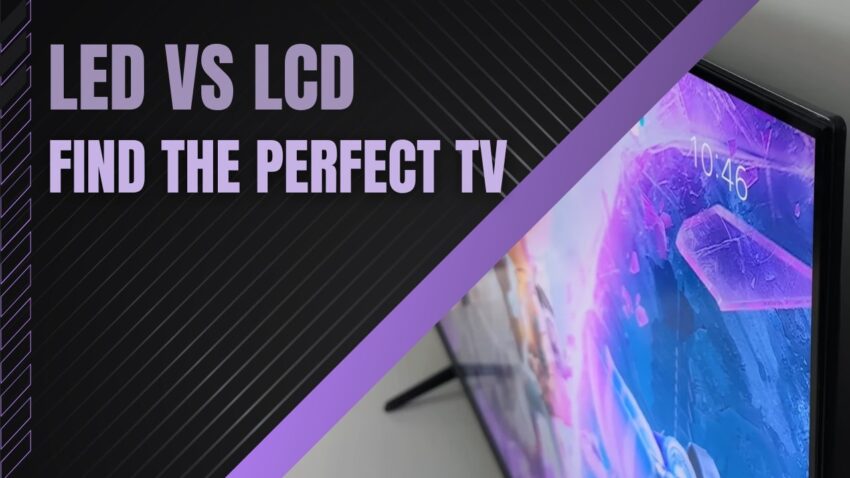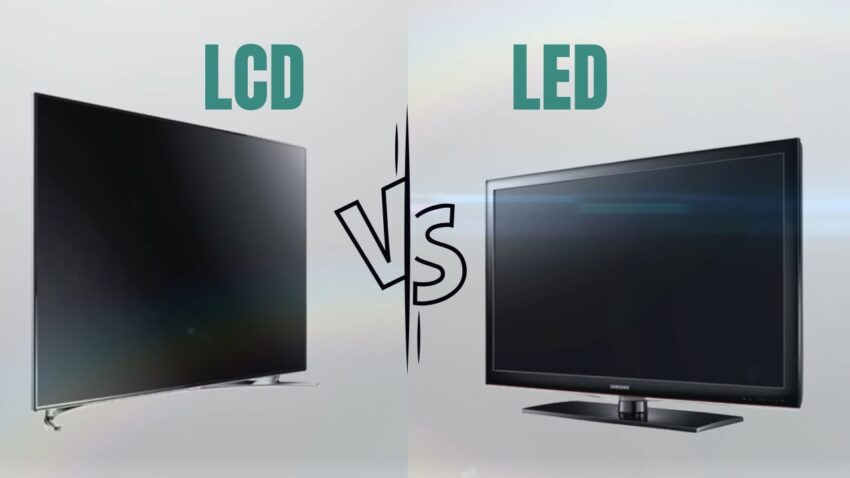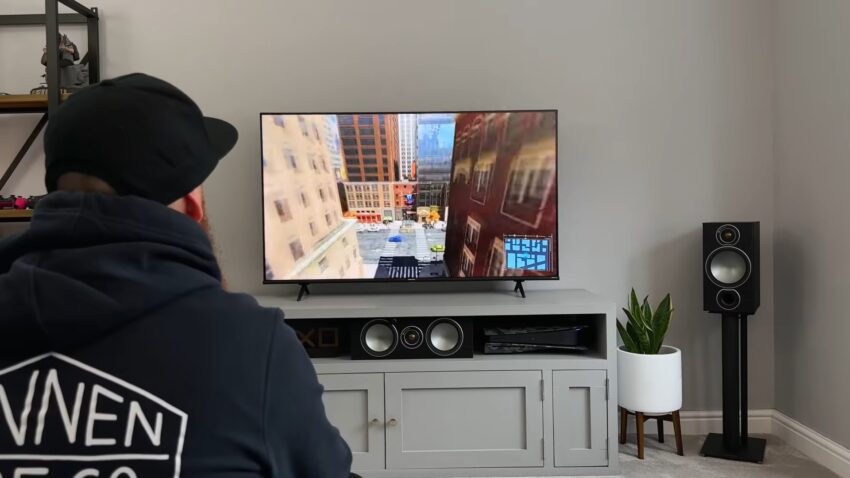The biggest factor when finding the best product for you is understanding the different techniques that each TV has. In this case, it is LED, and LCD TVs. Below I will go over the basic of each different type and share with you their weaknesses side by side with their strengths. I’m also aiming to keep brief as if you are more interested in the actual working behind the scenes I’ve done an article on just that which you can find here.
What is a LED TV?
A very simple answer to what is a LED TV is that it is a ‘light-emitting diode’. These types of TVs use standard LCD panels while LED lights are used as the backlight to help produce a more appealing picture. They are also more affordable and more widely available. this is because they are easy and cheaper to manufacture than its competition.
For this reason, if you find yourself needing to save some money when buying a TV, a LED TV will be your best choice. They offer the most advantages for the cost and simply are just downright reliable.
What is LCD TV?
A very simple answer to what is an LCD TV is that it is a TV display technology depends on the liquid crystal display. LCD TVs consume less power when compared to the plasma displays because they operate on the principle of blocking light instead of emitting it. An LCD display uses an active matrix screen grid or a passive matrix. The active matrix LCD is also known as a thin film transistor (TFT) display.
| Features | LCD TV | LED TV |
|---|---|---|
| Thickness | Minimum 1 inch | LED edge backlit LCD TVs are thinner than CCFL LCD TVs. Often less than 1 inch. |
| Cost | Much cheaper | $100 (small size and very low end) – $25,000 |
| Power consumption | Requires less power to operate when compared to plasma, but more than OLED TVs | LED-lit LCD TVs consume less power around 70% compared to plasma TVs. |
| Screen size | 13 – 57 inches | Up to 90 inches |
| Burn-in | Not an issue | Burn-in is very rare. |
| Backlight | Yes | No |
| Viewing angle | Up to 165°, Picture suffers from the side | The brightness and color on LCD TVs shift noticeably over the screen and depending on viewing angle |
| Mechanism | Backlight covered by a layer of liquid crystals | Light-emitting diodes |
Difference between: LED vs LCD:
The LED TV uses less power, and also provides a good and brighter picture quality with a good contrast ratio looks like a standard screen display. This is because LED uses backlighting light-emitting diodes compared to the standard LCD TV CCFLs. An LED TV screen is not an LED display, so it would be “LED-backlit LCD TV” for a more technically correct term.
What’s better: LED or LCD TVs?
LED TVs are having two main forms of backlighting, edge lighting, and local dimming. when our main requirement is for the picture quality it is recommended that better to choose the LED TVs. Because the LED TVs picture quality is good and is standard, LED TV design and appearance looks are best when compared to the LCD TVs.
Manufacturers are getting more profit when designed with LED TVs because the LED TVs use less power or energy when compared with the CCFl LCD TVs. And also it consumes less power so many of the people save more money on your current bill.
Edge lighting has LEDs around the edge of the panel, making it possible to build incredibly thin. Recently, these lights can be produced in very small dimensions through advances in LED (light-emitting diode) technologies so that even local backlighting LED TVs can have a very thin range.
Local dimming backlighting features behind the display panels of LED lights and these sections can be regulated to reduce the quantity of backlighting in dim regions of the display and increase it in light regions for greater quality and stronger colors. This is achieved with various choices in TV features. The latest instance had an alternative to switch on or off the local dimming option. With the function on, we noticed an enhancement in dark-skinned levels.
- Picture quality: As a notice and by the reviews of the user LED TV produces the better Picture quality compared to the LCD TV even though there is no straight answer which TV produces the high image quality on the screen as both the TV uses same features and has a same kind of display. For example, a higher-end LCD TV may have stronger performance than a low-end LED TV, but if you stare at either TVs high-end designs and the performance will be similar.
- Color: An LED TV offers more colors, especially ones that use RGB-LED backlighting.
- Power Consumption: LED TVs use energy-efficient light-emitting diodes (LED) for backlighting. These consume less power than cold cathode fluorescent lamps (CCFL) used in traditional LCD televisions. Power savings are typically 20-30%.
Which TV Type is Best for Gaming?
When it comes to gaming, there are a few factors to consider when choosing between LED and LCD TVs. Here’s what you need to know:
Input lag: Input lag is the time it takes for the TV to display an image after receiving a signal from the gaming console or computer. It can significantly impact your gaming experience, especially in fast-paced games that require quick reflexes. Generally, LED TVs have lower input lag than LCD TVs, making them a better choice for gamers.
Refresh rate: The refresh rate is the number of times per second that the TV updates its image. A higher refresh rate can result in smoother motion and a more immersive gaming experience. Both LED and LCD TVs can have high refresh rates, with some models offering up to 120Hz or more.
Response time: The response time is the time it takes for a pixel to change from one color to another. A faster response time can result in less motion blur and ghosting, which can be especially important in fast-paced games. LED TVs typically have faster response times than LCD TVs, making them a better choice for gaming.
How to Choose the Right TV Type for Your Need
Choosing the right TV type can be a daunting task, with so many options available in the market. Here are some factors to consider when choosing between LED and LCD TVs:
- Picture quality: Both LED and LCD TVs can offer excellent picture quality, but LED TVs tend to have better contrast ratios, deeper blacks, and more vibrant colors. LCD TVs, on the other hand, can have issues with color accuracy and uniformity.
- Viewing angle: LED TVs tend to have better-viewing angles than LCD TVs, which means that the picture remains clear and consistent even when viewed from the side.
- Energy efficiency: LED TVs use energy-efficient light-emitting diodes (LED) for backlighting, which consume less power than cold cathode fluorescent lamps (CCFL) used in traditional LCD televisions. If you’re concerned about your electricity bill, LED TVs are a better choice.
- Price: LCD TVs are generally more affordable than LED TVs, although the price difference has been decreasing in recent years. If you’re on a tight budget, a good quality LCD TV may be the best option.
- Gaming: As mentioned before, LED TVs are generally better for gaming due to their lower input lag and faster response times. If you’re a serious gamer, investing in a high-quality LED TV may be worth the extra cost.
- Size: Both LED and LCD TVs are available in a variety of sizes, so it’s important to choose a size that’s appropriate for the room and your viewing distance.
How Color Reproduction Differs Between LED and LCD TVs
Color reproduction is one of the most important factors to consider when choosing a TV. LED and LCD TVs use different technologies to produce colors, and as a result, there are some differences in color reproduction between the two types of TVs.
LED TVs use LED backlighting to illuminate the pixels on the screen. These LEDs can produce a wide range of colors, and the color accuracy of LED TVs has improved significantly in recent years. LED TVs also have a wider color gamut than LCD TVs, which means they can reproduce more colors than LCD TVs.
LCD TVs, on the other hand, use a liquid crystal display to control the amount of light that passes through each pixel. The color accuracy of LCD TVs has also improved in recent years, but they still cannot match the color accuracy of LED TVs. LCD TVs also have a narrower color gamut than LED TVs, which means they cannot reproduce as many colors as LED TVs.
One of the biggest factors affecting color reproduction on both LED and LCD TVs is the panel technology used. IPS (in-plane switching) panels are known for their accurate color reproduction and wider viewing angles, while VA (vertical alignment) panels have better contrast ratios but may have more limited viewing angles and less accurate color reproduction.
In terms of HDR (high dynamic range) content, LED TVs generally perform better than LCD TVs due to their wider color gamut and higher peak brightness levels. However, some high-end LCD TVs with full-array local dimming can also perform well in HDR content.
Conclusion
When it comes to choosing between an LED and an LCD TV, the decision ultimately depends on personal preference and budget. LED TVs generally offer better picture quality, energy efficiency, and gaming performance, while LCD TVs can offer good overall picture quality at a more affordable price point. It’s important to consider factors like color reproduction, response times, and viewing angles when making a decision.
Ultimately, the best TV for you is the one that meets your specific needs and fits within your budget.










